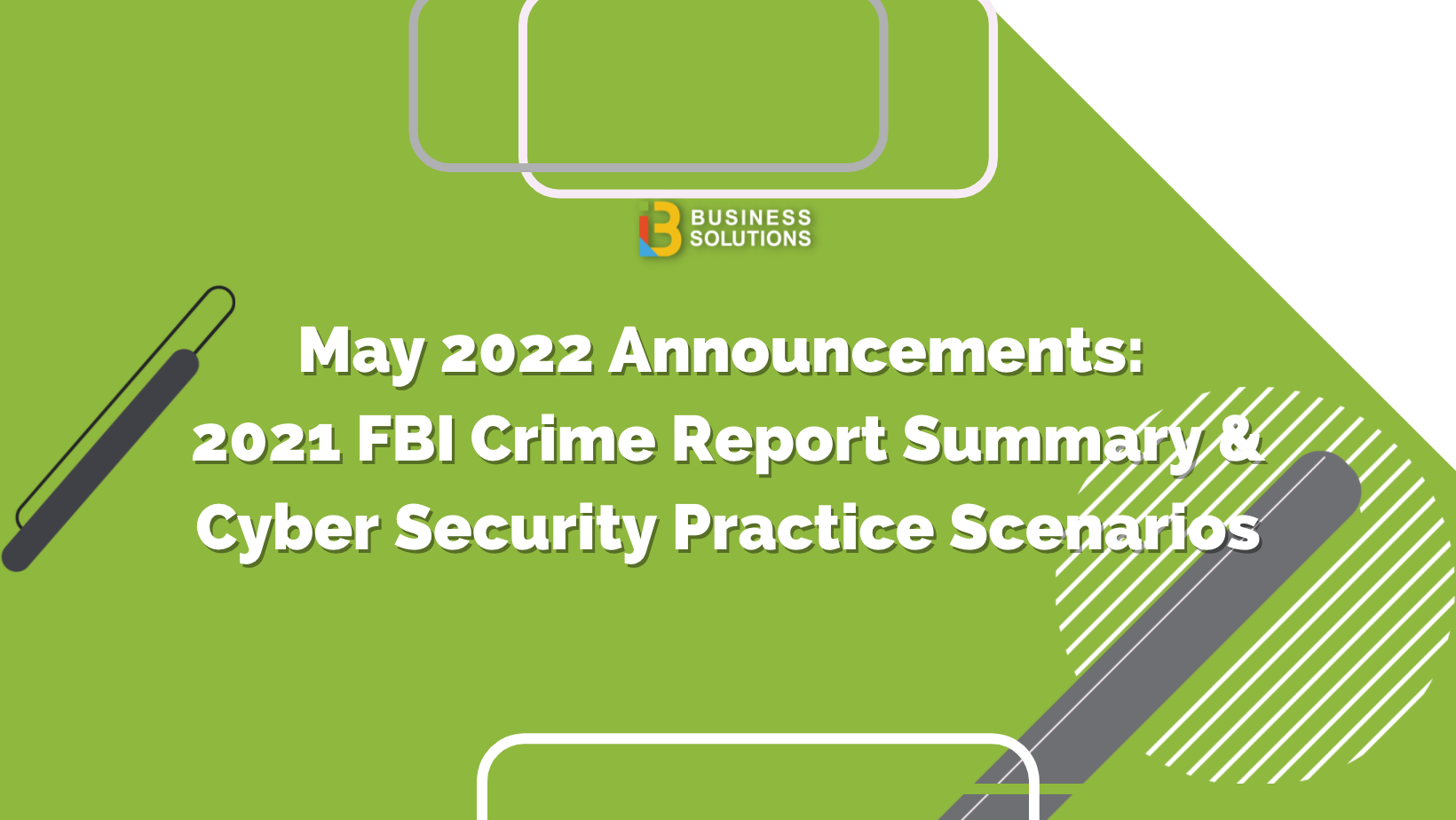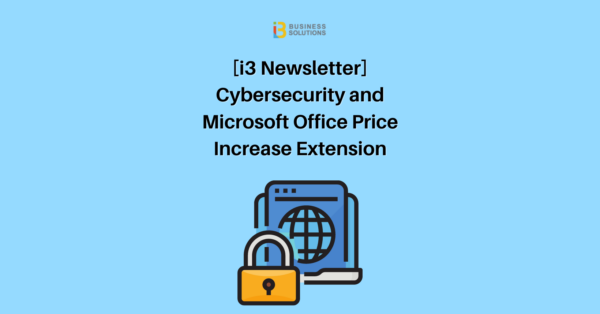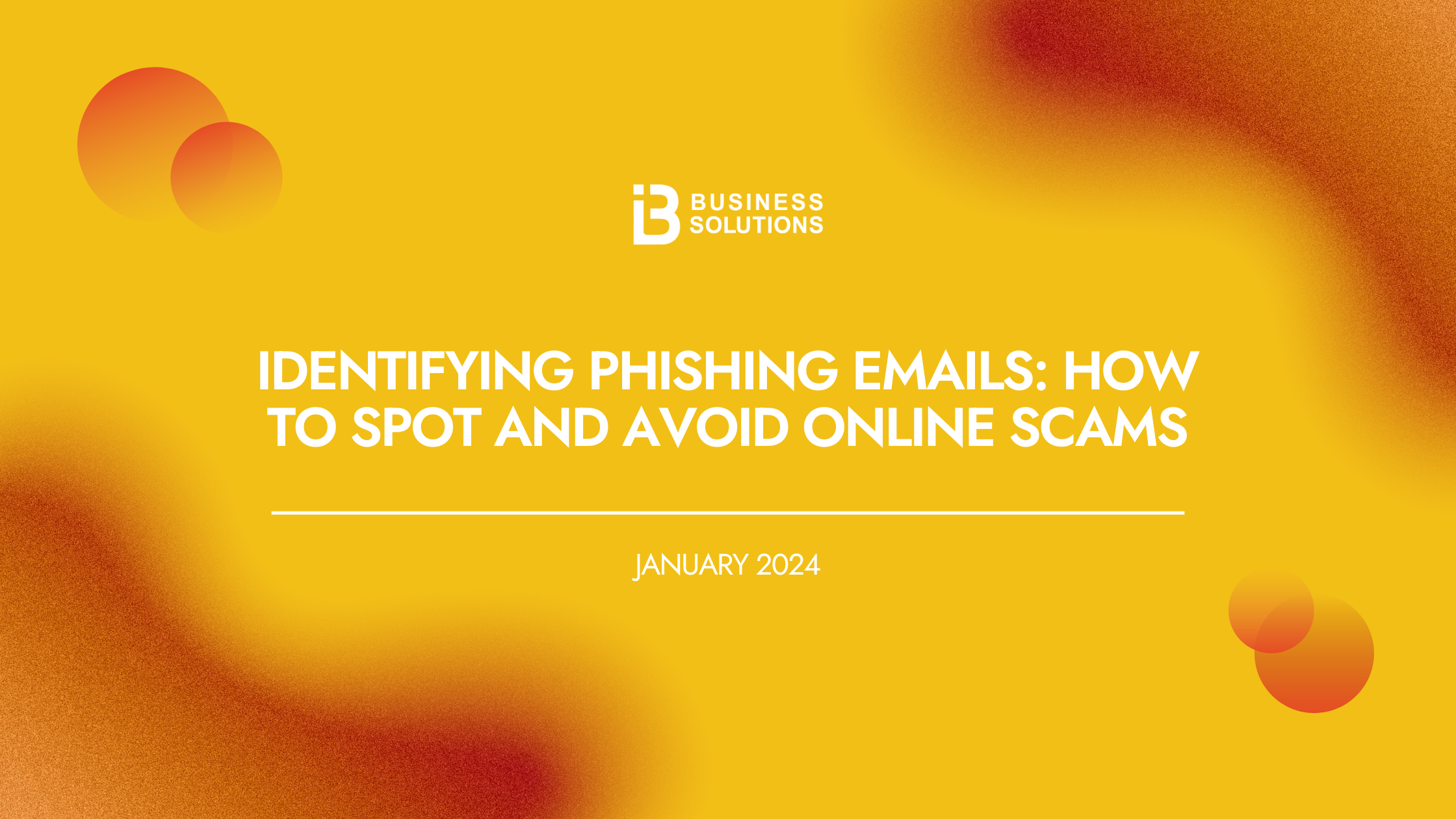What is Multi-Factor Authentication and Why is it Important?
In a world where cyber threats are constantly evolving, it's crucial for small businesses and individuals alike to prioritize cybersecurity. i3 Business Solutions, a leading IT provider, recently shared insights on Wood TV about the mPerks cyber theft incident, underscoring the importance of robust online security practices. In this blog post, we'll delve into some valuable tips to keep your online accounts safe, especially for small businesses seeking a reliable IT partner.
Understanding Multi-Factor Authentication
Multi-factor authentication (MFA) is a security measure that requires users to provide multiple forms of identification in order to access an online account or system. Instead of relying solely on a password, MFA adds an extra layer of protection by combining something the user knows (such as a password) with something the user has (such as a mobile device or security token) or something the user is (such as a fingerprint or facial recognition). This additional authentication factor makes it much more difficult for cybercriminals to gain unauthorized access to sensitive information.
By implementing MFA, businesses and individuals can significantly enhance the security of their online accounts and systems. It provides an additional barrier of protection against unauthorized access, even if passwords are compromised. MFA helps prevent identity theft, data breaches, and other cybercrimes by ensuring that only authorized users can access sensitive information and perform certain actions.
The Importance of Multi-Factor Authentication
Multi-factor authentication is crucial in today's digital landscape where cyber threats are becoming increasingly sophisticated. Traditional passwords alone are no longer enough to protect sensitive data and accounts. Cybercriminals can easily obtain passwords through various means, such as phishing attacks, data breaches, or social engineering tactics. With MFA, even if a password is compromised, unauthorized access is prevented because the attacker would also need the additional authentication factor.
MFA adds an extra layer of security by requiring users to provide multiple forms of identification. This significantly reduces the risk of unauthorized access and provides peace of mind to businesses and individuals. By implementing MFA, organizations can protect their valuable data, customer information, and financial resources. Individuals can safeguard their personal accounts, preventing unauthorized access to their emails, social media profiles, and online banking.
Overall, the importance of multi-factor authentication cannot be overstated. It is a powerful security measure that significantly reduces the risk of unauthorized access and strengthens the overall security posture of businesses and individuals.
Benefits of Multi-Factor Authentication
There are several key benefits of implementing multi-factor authentication:
1. Enhanced Security: MFA adds an additional layer of security, making it significantly more difficult for cybercriminals to gain unauthorized access to accounts and systems.
2. Protection Against Password Breaches: Even if passwords are compromised, MFA prevents unauthorized access because the attacker would also need the additional authentication factor.
3. Convenience and User-Friendliness: Many MFA methods, such as biometrics or mobile authentication apps, are convenient and easy to use. They provide a seamless user experience while ensuring strong security.
4. Regulatory Compliance: MFA is often required by industry regulations and standards to protect sensitive data and ensure compliance with security guidelines.
5. Cost-Effective: Implementing MFA can save organizations significant costs associated with data breaches, identity theft, and unauthorized access.
By leveraging these benefits, businesses and individuals can greatly enhance their security posture and protect themselves against a wide range of cyber threats.
Best Practices for Implementing Multi-Factor Authentication
When implementing multi-factor authentication, it is important to follow these best practices:
1. Choose Reliable Authentication Methods: Select authentication methods that are secure, user-friendly, and appropriate for the level of security required.
2. Educate Users: Provide clear instructions on how to enable and use MFA, and educate users about the importance of MFA in protecting their accounts.
3. Implement MFA Across Multiple Systems: Extend the use of MFA beyond critical systems to enhance overall security across the organization.
4. Regularly Review and Update MFA Policies: Stay updated with the latest security practices and technologies, and regularly review and update MFA policies and procedures.
5. Monitor and Respond to MFA Events: Implement a system to monitor MFA events, detect any suspicious activities, and respond promptly to potential security breaches.
By following these best practices, organizations can effectively implement MFA and maximize its security benefits.
Conclusion
Multi-factor authentication is a crucial security measure that enhances online security by requiring users to provide multiple forms of identification. It adds an extra layer of protection, making it significantly more difficult for cybercriminals to gain unauthorized access to sensitive information and accounts. By implementing MFA, businesses and individuals can reduce the risk of data breaches, identity theft, and unauthorized access.
The benefits of multi-factor authentication are numerous, including enhanced security, protection against password breaches, convenience and user-friendliness, regulatory compliance, and cost-effectiveness. By following best practices for implementing MFA, organizations can ensure a strong security posture and protect themselves against a wide range of cyber threats.
In today's digital world, where cyber threats are prevalent, multi-factor authentication is not just a recommended security measure, but a necessary one to safeguard sensitive information and maintain trust in online systems.
If you would like to find out if your company has any credentials exposed on the Dark Web - contact us today for a complimentary report of any exposures currently out there.
Share this
You May Also Like
These Related Stories

What’s New With i3? FBI Takeaways and New Cyber Security Tabletop Exercises

[i3 Newsletter] Cybersecurity and Microsoft Office Price Increase Extension



Comments (1)